A Study on Enrichment Characteristics of Harmful and Beneficial Elements in Maize Rhizosphere Soil and Plants in Hetao Agricultural Economic Zone
Geological Survey Institute of Inner Mongolia Autonomous Region, Hohhot 010020, China
1 Introduction
Hetao agricultural economic zone in Inner Mongolia has rich water resources and abundant light and heat resources, and it is an important grain production base in China. Maize is the main crop in the region. Crops have obvious adsorption specificity for elements, and the excess adsorption of harmful elements will affect the quality of crops, and have an impact on human health. The required mineral nutrients for maize are mainly absorbed from the soil, and the soil nutrient status directly affects maize plant growth and grain yield[1-2]. Rhizosphere is the soil micro-environment affected by plant root and its growing activities, and the study on the content of harmful and beneficial elements in rhizosphere soil and plant is of great significance to understanding the environmental behavior of heavy metals in soil-plant system[3]. The abundance level of soil mineral elements can provide a reference for maize fertilization. Previous studies mainly focus on the analysis and evaluation of harmful and beneficial elements in maize seeds, and there are no systematic studies on the harmful and beneficial elements in rhizosphere soil and plant. By determining the content of harmful and beneficial elements in maize rhizosphere soil, seeds and stems and leaves samples in Hetao agricultural economic zone, this paper evaluates the enrichment characteristics of heavy metal elements and rare earth elements in maize in order to provide a scientific basis for the local environmental control and maize planting.
2 Materials and methods
2.1SamplecollectionThe maize samples were collected in accordance withTechnicalRequirementson LocalEcologicalGeochemicalAssessmentof Geological Survey of China. The maize was processed into granules in the room, and the dried stems and leaves were sent for laboratory analysis. The normal plots were chosen for maize sample collection, and the samples were collected from 4 to 5 maize plants. After sample collection, the roots, stems, leaves and grain of plant samples were immediately separated, to avoid nutrient transfer. After mixing, the quartering method was used to split sample to the amount required, and about 100 g of dry samples were ensured. After threshing, the grain was mixed and split by square method and quartering method, and about 250 g of grain was taken. About 500 g of seeds with large grain were taken. At the same collection point, the rhizosphere soil samples were collected, weighing more than 1000 g.
2.2MeasurementitemsandmethodsIn this study, all samples were sent to the Central Laboratory of Geophysical and Geochemical Survey Institute of Chinese Academy of Geological Sciences, and Mineral Experimental Research Institute of Inner Mongolia for analysis. Various samples must be under related laboratory tests, including standard and outlier checks, and the analysis results of various samples were satisfactory. The total content and pH of some elements (As, B, Cd, Cu, Hg, Mn, N, P, Pb, Zn, Al2O3, CaO, Fe2O3, K2O, MgO, Na2O, SiO2, U, Th, Ce, La, Se, Co, Ni, Cr) in maize rhizosphere soil samples were tested. The total content of some elements (As, Se, Hg, Mn, Ni, Cu, Zn, Pb, F, Mo, Cr, Fe) in maize plant was tested. As, Hg and Se were measured by atomic fluorescence spectrometry (AFS); Bi, Cd, Cr, Cu, Mo, Ni, Pb, Zn, Ce, La, Y, Dy, Er, Eu, Gd, Ho, Lu, Nd, Pr, Sm, Tb, Tm and Yb were measured by inductively coupled plasma mass spectrometry (ICP-MS); F was measured by ion selective electrode (ISE); N was measured by Kjeldahl method; Mn, P and K2O were measured by inductively coupled plasma optical emission spectrometer (ICP-OES). The bio-enrichment coefficient (C) was used to describe the enrichment coefficient characteristics of harmful elements:
C=Cb/Cc×100%
whereCbis the concentration of heavy metal element in maize seeds, stems or leaves;Ccis the concentration of heavy metal element in rhizosphere soil.
Based on the size of maize seed bio-enrichment coefficient, it was divided into four levels as follows;C1<0.5% (low enrichment level); 0.5%
3 Results and analysis
3.1Enrichmentcharacteristicsofharmfulelements
3.1.1Rhizosphere soil element content. The main soil types in Hetao maize growing areas include alluvial soil, irrigation-silting soil and chestnut brown soil. The maize safety was evaluated in accordance with the indicator requirements of soil contaminants (NY/T391-2000) (Table 1), and the content of Hg, Cd, As, Pb, F, Cr, Cu and Cr in maize rhizosphere soil. It was determined that the content of maize rhizosphere soil elements in the Hetao area was as follows: As 11.1 μg/g, Hg 69.97 ng/g, Cu 24.56 μg/g, Pb 21.39 μg/g, Cr 67.61 μg/g, Cd 165.65 ng/g, F 594.04 μg/g[4]. From Table 1, it can be found that the content of As, Pb, Cd, Hg, Cr and Cu in maize rhizosphere soil in Hetao is lower than the national standard, in line with green soil standard, indicating that the environmental conditions in the region are good.
3.1.2Seed element content.HeavyMetalStandardsforGreenFood—Maize(NY/T418-2000) provides that Hg≤10.0 ng/g, Cd≤100.0 ng/g, As≤0.4 μg/g, Pb≤0.2 μg/g, and F≤1.0 μg/g. It was determined that the content of Hg, Cd, As, Pb and F in maize seeds was lower than the national maize standard (Table 2), so it was green food, suitable for human and animal consumption.
Table1Indicatorrequirementsofsoilcontaminants

FarmingconditionsDrylandpH<6.5pH6.5-7.5pH>7.5PaddyfieldpH<6.5pH6.5-7.5pH>7.5Cd(ng/g)Hg(ng/g)As(μg/g)Pb(μg/g)Cr(μg/g)Cu(μg/g)≤300≤250≤25≤50≤120≤50≤300≤300≤20≤50≤120≤60≤400≤350≤20≤50≤120≤60≤300≤300≤20≤50≤120≤50≤300≤400≤20≤50≤120≤60≤400≤400≤15≤50≤120≤60

Table 2 Eigenvalues of maize seed element content[7] unit: Hg, Cd, ng/g; other elements, μg/g
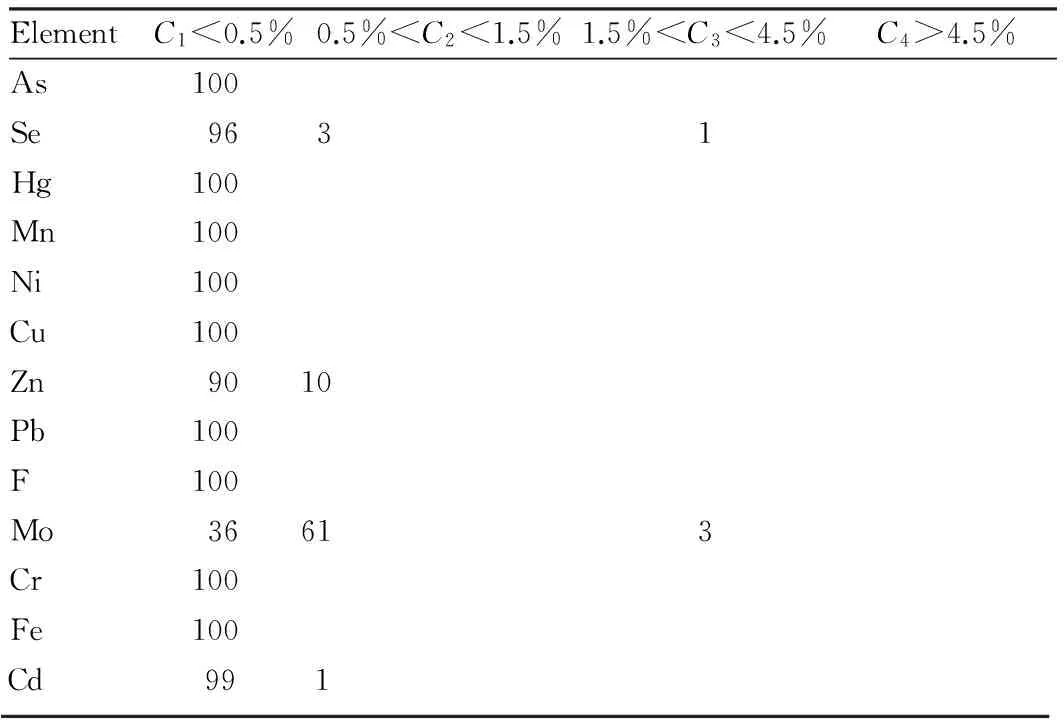
Table 3 Enrichment characteristics of harmful elements in maize seeds unit: %
3.1.3Enrichment characteristics of harmful elements in maize seeds. As can be seen from Table 3, more than 90% of the main harmful elements (except Mo, 36%) in maize seeds were at low enrichment level, and the low enrichment rate of As, Hg, Mn, Ni, Cu, Pb, F, Cr and Fe is 100%.
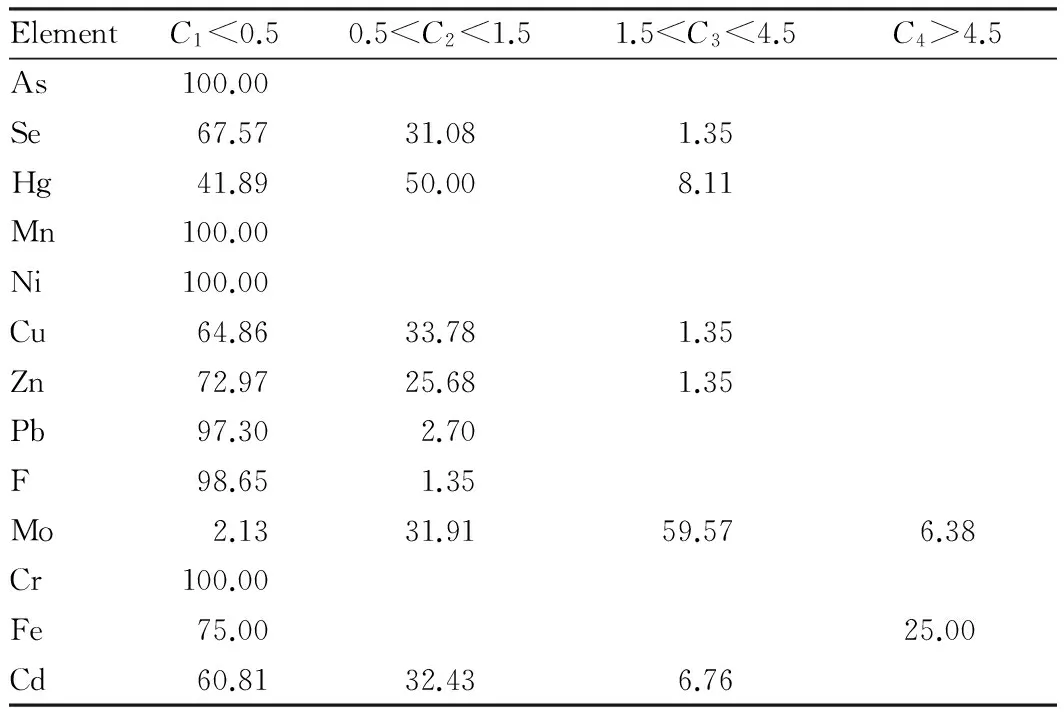
Table 4 Enrichment characteristics of harmful elements in maize stems and leaves unit: %
3.1.4Enrichment characteristics of harmful elements in maize stems and leaves. As can be seen from Table 4, the harmful elements in maize stems and leaves have four levels: low enrichment level; relatively low enrichment level; medium enrichment level; high enrichment level. Most of the elements are at low enrichment level, the low enrichment rate of As, Mn, Ni and Cr is 100%, and Hg (50.00%) is at a relatively low enrichment level. Mo is at a medium enrichment level, accounting for 59.57%; the relatively low enrichment level accounts for 31.91%; high enrichment level accounts for 6.38%. Among all elements, Fe has the highest enrichment level (25%).
3.2Enrichmentcharacteristicsofbeneficialelements
3.2.1Maize seeds. Table 5 shows that most beneficial and rare earth elements in maize seeds are at low enrichment level, and only N is at high enrichment level, with maximum enrichment coefficient of 730.3300 and minimum value of 5.9400. N enrichment is caused by crop’s nitrogen fixation by absorbing nitrogen from the atmosphere.
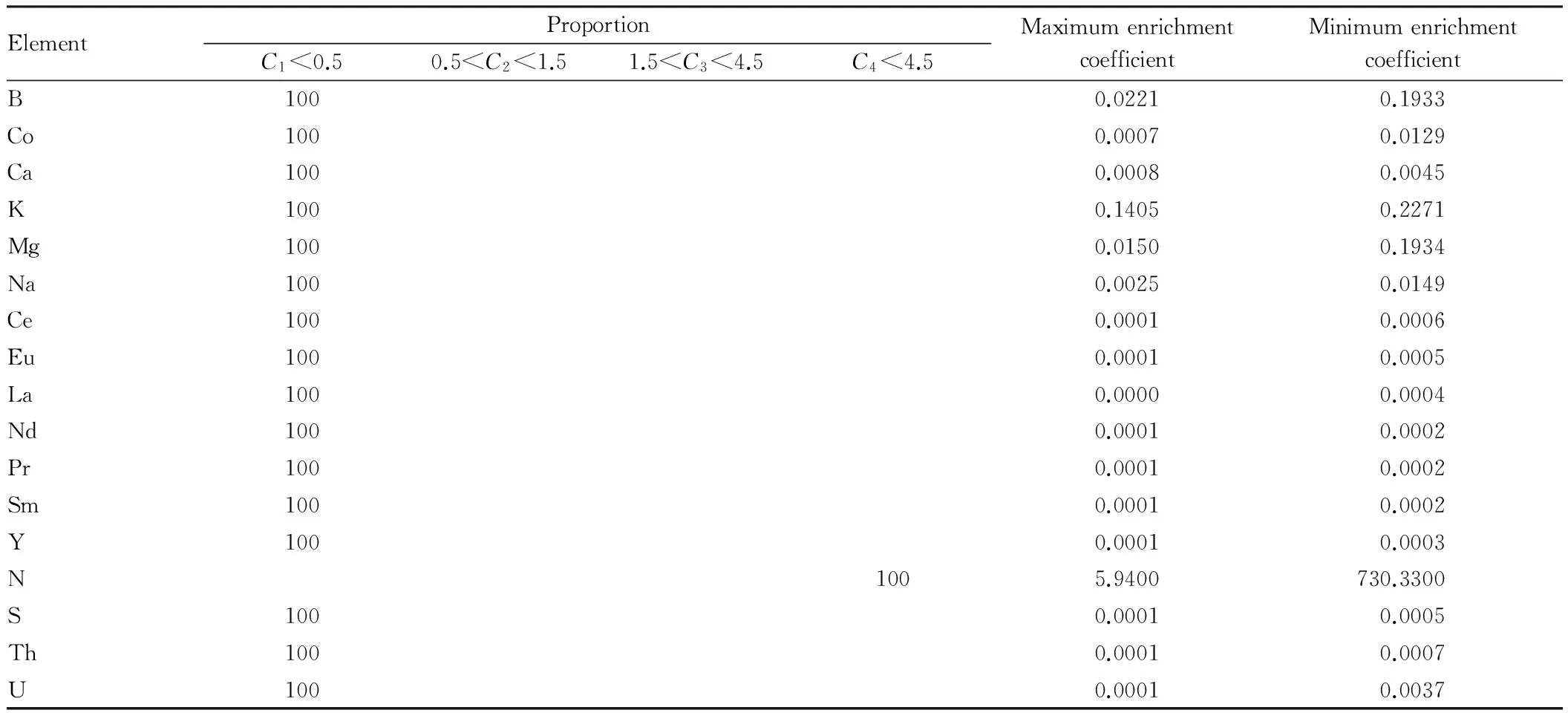
Table 5 Enrichment characteristics of beneficial elements and rare earth elements in maize seeds unit:%
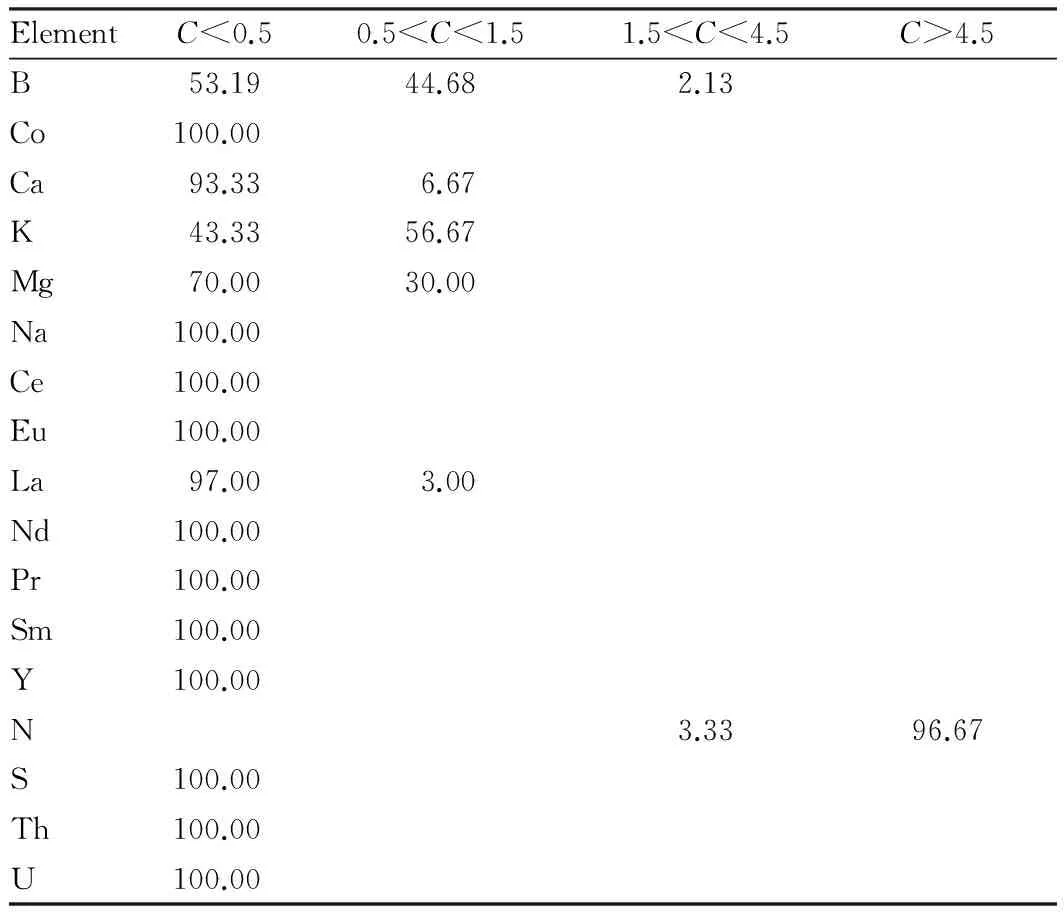
Table 6 Enrichment characteristics of elements in maize stems and leaves unit:%
3.2.2Maize stems and leaves. The element enrichment feature of maize stems and leaves is similar to that of seeds. As can be seen from Table 6, most of the elements are at low enrichment level (the samples with enrichment coefficient of less than 0.5 accounting for more than 50%), and only N is at high enrichment level. The samples at high enrichment level account for 96.67%.
4 Conclusions
The study results show that the content of As, Pb, Cd, Hg, Cr, Cu and As in maize rhizosphere soil is lower than the national standard, in line with the green standard, and the environment conditions of producing areas are excellent. In accordance withHeavyMetalStandardsforGreenFood—Maize, it is found that the content of harmful elements Hg, Cd, As and Pb in maize seeds is lower than the national standard, the main harmful elements occupy a small share in maize seeds, stems and leaves, and most of them are at low enrichment level element. Most beneficial elements are at low enrichment level, and only N is at high enrichment level. By comparing the content of elements in maize seeds with national green food standard, it is found that the content of all elements in maize is lower than the element content limit of food, indicating that the maize seeds, stems and leaves in Hetao are safe and good, and have a small impact on human and animal health.
[1] WU JF, YU W, CAI DL,etal. Evaluation on the suitability of maize in 855 farm [J]. Jilin Agriculture, 2014. (in Chinese).
[2] XIAO Y, LIU K. Research of comprehensive evaluation of agricultural land suitability in typical area of Huanghuaihai Plain based on GIS [J]. Journal of Anhui Agricultural Sciences, 2010(24): 13358-13361. (in Chinese).
[3] SONG JY. Mercury changes in corn rhizosphere soil [J]. Chemical World, 2009(7) :412-413.(in Chinese).
[4] ZHANG Q, HUANG ZF, WANG XK,etal. Report on the geochemical evaluation of agroecological environment of corn producing area in Hetao Agroeconomic Zone of Inner Mongolia [R]. 2009. (in Chinese).
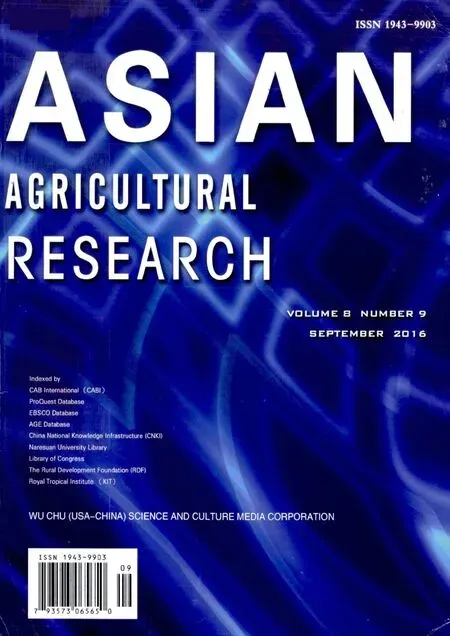 Asian Agricultural Research2016年9期
Asian Agricultural Research2016年9期
- Asian Agricultural Research的其它文章
- Empirical Study on the Relationship between Organizational Flexibility and Performance of Agricultural Enterprise
- Correlation between Employment Quality and Skill Training of Land-expropriated Farmers
- A Study on Spatial Distribution of Commercial Housing Prices in Xiangtan City
- Design and Experiment of Fluid Dynamic Ultrasonic Water Aerator
- The Relation between Age Structure of Population and Resident Consumption Based on Endogenous Growth Theory
- Effect of Different Pretreatments on Explosion Puffing Drying of Hami Melon at Modified Temperature and Pressure in Xinjiang
